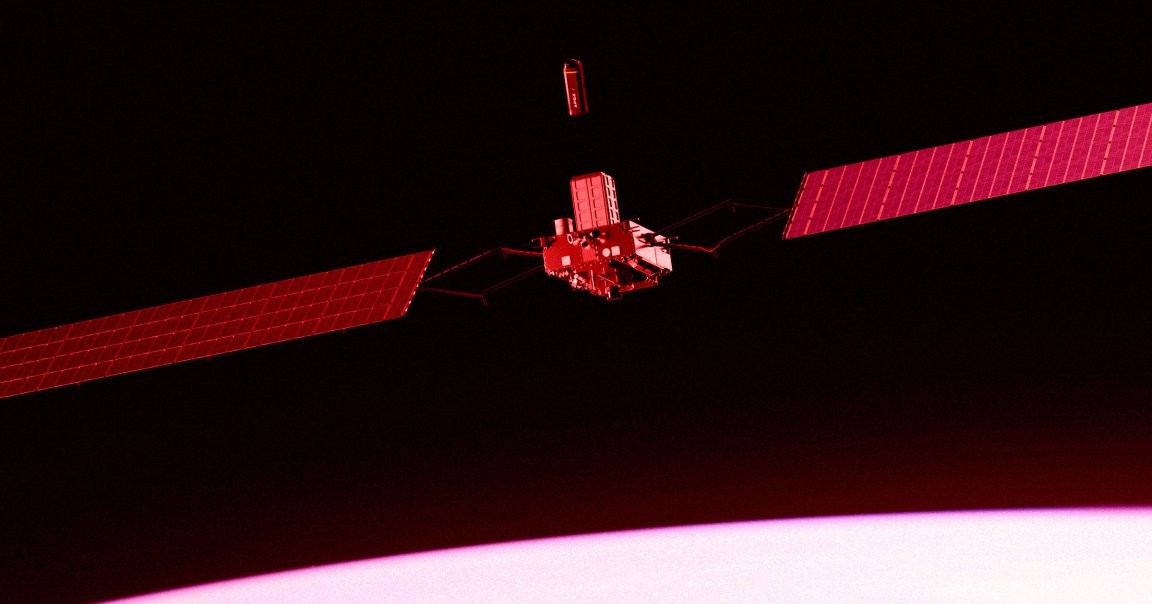A Private Startup Says It Will Launch a Test Weapon Into Orbit — and the Pentagon Could Spend Trillions to Build It
Last month, the Department of Defense invited private industry to propose prototypes of space-based interceptors (SBIs) — orbital weapons designed to intercept missiles. The move is tied to the Trump administration’s Golden Dome missile shield plan and has already drawn interest from several contractors. One of them is Apex, a Los Angeles–based startup that has been mass-producing satellite buses and won a $46 million Space Force contract to deliver satellites over the next six years. This week Apex announced 'Project Shadow,' which it calls America’s first commercially led, on-orbit SBI demonstration, with a goal of sending two interceptors on one of its commercial off-the-shelf satellite platforms as soon as June 2026. After deployment, the plan is to environmentally control the interceptors and even issue a fire-control command.

In This Article:
Project Shadow and the Orbital Magazine: The Plan to Power Interceptors in Space
'Project Shadow' is described as America’s first commercially led, on-orbit space-based interceptor demonstration. Apex plans to deploy two interceptors on one of its commercial off-the-shelf satellite platforms, with environmental controls and a fire-control capability after deployment. The goal is to environmentally control the interceptors and even issue a fire-control command. The company calls the host platform an 'Orbital Magazine' — a spacecraft designed to deploy multiple prototype interceptors in orbit. CEO Ian Cinnamon says Apex moves fast and believes this speed is essential in the New Space Race. 'In under a year, we are launching the host platform for space-based interceptors, called an Orbital Magazine, which will deploy multiple prototype missile interceptors in orbit.' 'Apex isn’t waiting for handouts or contracts; we are developing this Orbital Magazine technology on our own dime and moving incredibly fast.' The goal, he says, is to deploy two interceptors to demonstrate the 'core capabilities of the Orbital Magazine — an advanced host platform built to support next-generation space defense missions.' 'Beyond communications, the Orbital Magazine will serve as a life-sustaining platform for the interceptors — providing essential power, heat, and environmental support,' the company wrote.

Payload, Power, and the Challenge of Integration: The Orbital Magazine Vision
The goal is to carry payloads of up to 11,000 pounds, potentially enabling thousands of SBIs to be staged in orbit. Cinnamon says all of the pieces required to make it viable exist: satellites, boosters, seekers, fire control, in-flight target updates (IFTUs), and inter-satellite links. He concedes that combining these pieces is 'really, really difficult.' The Orbital Magazine is envisioned as a life-supporting host for interceptors, providing power, temperature regulation, and environmental control.

The Competition Heats Up: Lockheed Martin and Northrop Grumman Jump Into the SBI Race
Apex isn’t the only contractor pursuing space-based interceptors. Lockheed Martin is also working on the tech and plans a demonstration by 2028. CEO James Taiclet said, 'We are building prototypes — full operational prototypes, not things in labs, not stuff on test stands, things that will go into space, or in the air, or fly across a missile range. These are real devices that will work and that can be produced at scale. So the space-based interceptor is one we’ve been pursuing already, and that’s all I can say about that.' Northrop Grumman has signaled similar tests as well. Apex will be competing with the big players in a race that could redefine the economics and politics of space defense.

Costs, Feasibility, and the Future of Space Defense
The Golden Dome defense shield is pitched at $175 billion over the next three years, a figure that has drawn skepticism from experts. Bloomberg also reported that the price could be far higher, with American Enterprise Institute analysts estimating a range of $252 billion to $3.6 trillion over the next 20 years. Apex’s leader insists the technology is feasible: 'All of the pieces that are required to make it viable exist. We have satellites, we have boosters, we have seekers, we have fire control, we have IFTUs, we have inter-satellite links.' Yet Cinnamon concedes that integrating these parts is 'really, really difficult.' The plan envisions payloads of up to 11,000 pounds, enabling thousands of SBIs to be staged in orbit. This story raises questions about the role of the private sector in national security, the feasibility of a space-based weapons system, and the costs and risks of turning orbital defense into a commercial enterprise.

